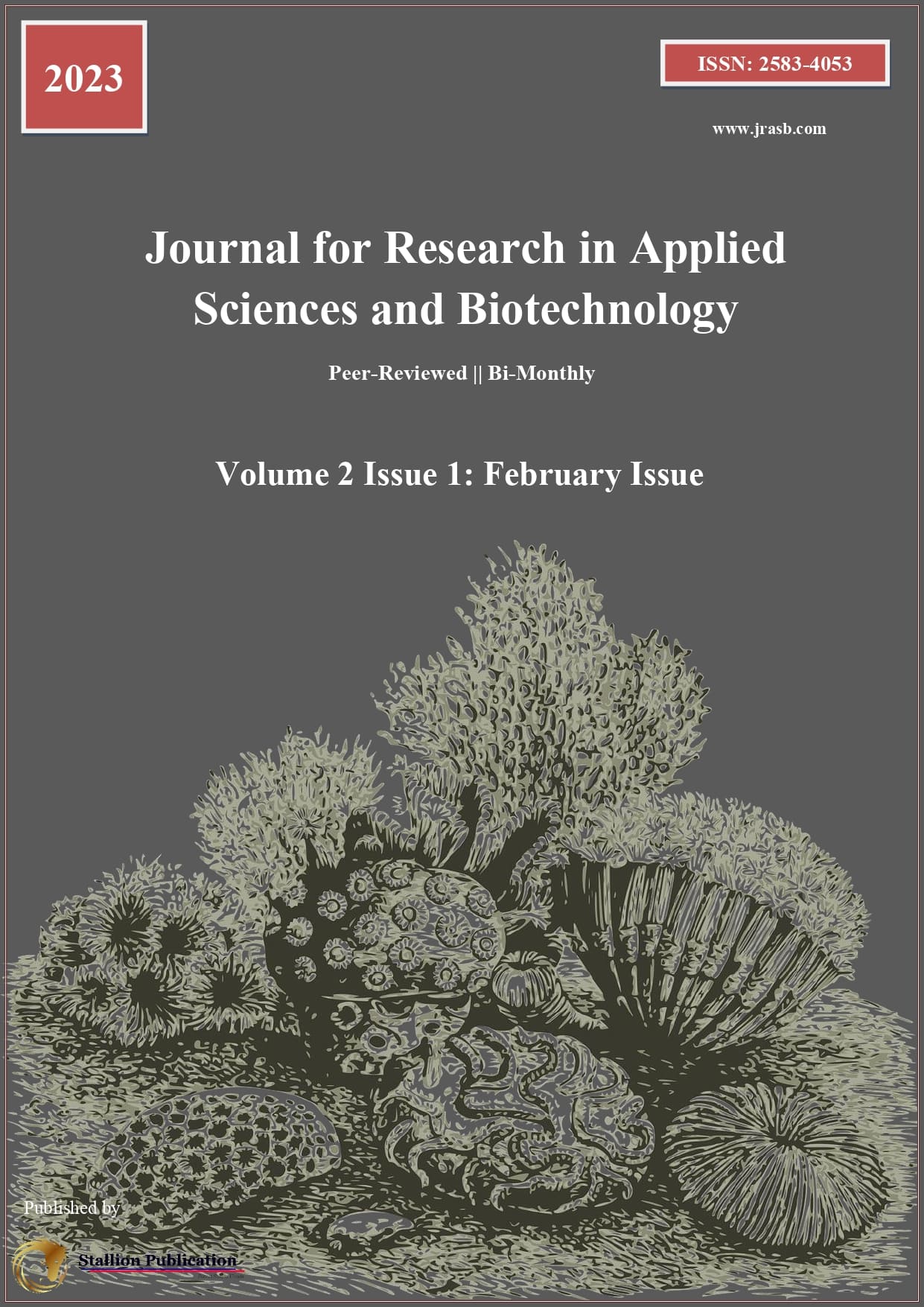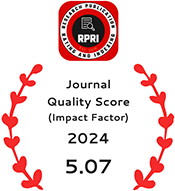A Review on Commercial Utility of Some Cultivable Algal Species Naturally Inhabiting in Water Bodies of Kota, Rajasthan
DOI:
https://doi.org/10.55544/jrasb.2.1.19Keywords:
algal farming, phytoremediation, aquatic habitatsAbstract
Algae, not only one of the most significant organism of the planet, but also acclaimed as major photosynthetic autotrophs and responsibly contributing in sustainability of the planet by their unique yet significant ecological interactions. Along with production of biofuel and biomass, metabolic products of different species of algae are most commonly cultivated and used for pharmaceuticals, nutraceuticals, phytoremediation, wastewater treatment, antibiotics, dyes, food industry and so on. Apart from that, some members serve as bio indicator, provides specific information about the habitats they inhabit in, and thus serves as an effective tool for bio monitoring, and also helps in efficient management of the aquatic ecosystem. This study looks into the value of some naturally occurring chlorophycean and cyanophycean members which are intentionally cultivated and utilized at several parts of the world. For this study, samples were collected and identified for the presence of cultivable species of chlorophyceae and cyanophyceae, their known applications and commercial status so that further need of study for highest possibilities could be estimate in the field of algal cultivation for future prospective for aquatic algal habitats of Kota, Rajasthan.
Downloads
References
Bhatnagar, M., & Bhardwaj, N. (2013, April 2). Biodiversity Of Algal Flora In River Chambal At Kota,Rajasthan. Nature Environment And Pollution Technology, 12, 547-549.
Bouaicha, N. (Ed.). (2021, April 24). Cyanobacteria-From The Oceans To The Potential Biotechnological And Biomedical Applications. Marine Drugs.
Hemantkyumar, J. N., & Rahimbhai, M. I. (2019, November 19). Microalgae And Its Use In Nutraceuticals And Food Suppliments. Retrieved From Intechopen: Intechopen.Com
Kiran, T., & Tiwari, A. (2018, July 4). Chapter Metrics Overview. Retrieved From Intechopen: Www.Intechopen.Com
Pereira, A. G., Corral, M. F., Oleveira, P. G., Lopes, C. L., Carpena, M., Prieto, M. A., & Gandara, J. S. (2021, March 24). The Use Of Invesive Algal Species As A Source Of Secondary Metabolites And Biological Activities:Spain Ascase Study. Marine Drugs.
Sharma, P., & Bhardwaj , N. (2017, September 9). Algal Biodiversity In Some Water Bodies Of Kota,Rajasthan,India. International Research Journal Of Biological Sciences, 6(9),7-14.
Tan, J. S., Lee, S. Y., Chew, K. W., Lam, M. K., Lim, J. W., Ho, S. H., & Show, P. L. (2020, January 24). Bioengineered. Retrieved From Ncbi: Www.Ncbi.Nlm.Nih.Gov
Annalakshmi, G. and Amsath, A. 2012. Studies on the hydrobiology of river Cauvery and its tributaries Arasalar from Kumbakonam region with reference to phytoplankton. IJPAES, 2(2) pp. 37-46.
Desikachary, T.V. 1959. Cyanophyta, ICAR Publication, New Delhi.
Edmondson, W.T. 1959. Freshwater Biology. II,John Wiley and SonsInc., New York.
Palmer, C.M. 1980. Algae and Water Pollution. Castle House Publisher Ltd., England.
Algae basics, ALLABOUTALGAE.COM
Downloads
Published
How to Cite
Issue
Section
License
Copyright (c) 2023 Priyal Vijayvargiya, Dr. Pratima Shrivastava

This work is licensed under a Creative Commons Attribution-NonCommercial-NoDerivatives 4.0 International License.


















